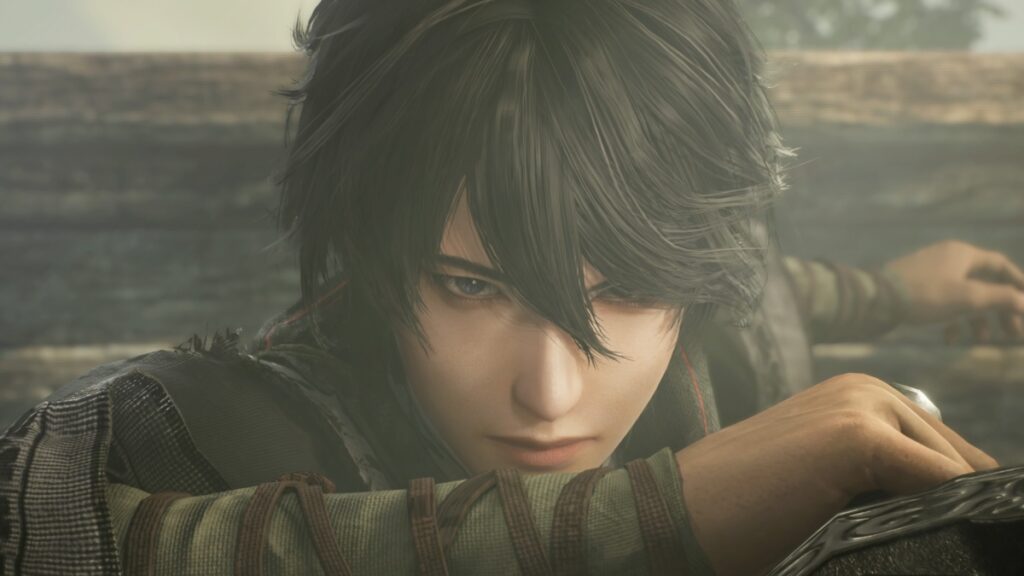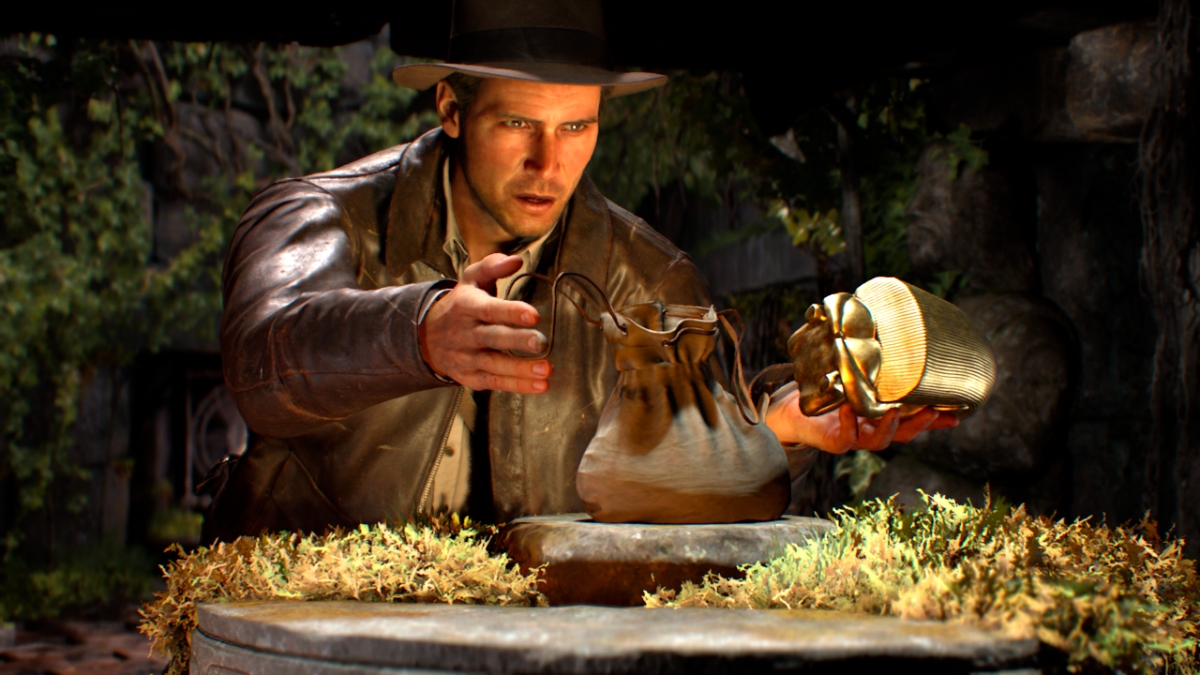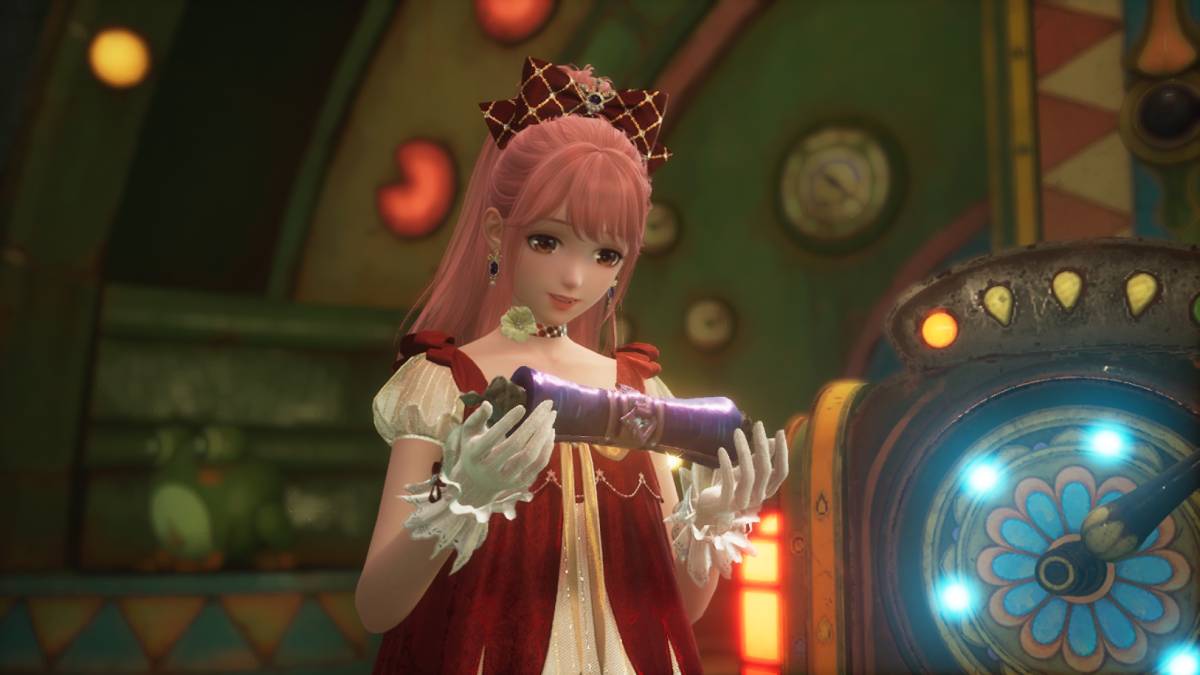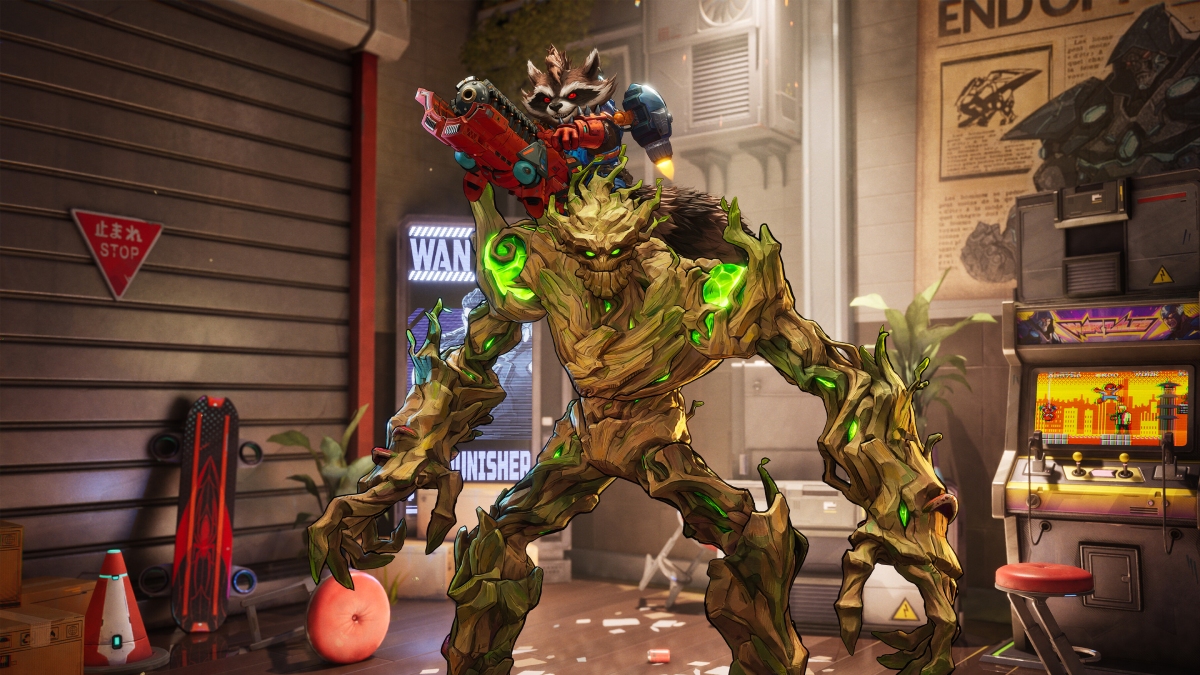Skip To...
If there’s one game series that has built a literal dynasty behind it (no pun intended), it’s Dynasty Warriors. With ups and downs, trials and errors, and many entries under its belt, it’s one of the most beloved franchises out there. So, how does Dynasty Warriors: Origins fit in with all of them? We all know its approach to the series is that of a soft reboot. But does it do justice to the legacy its predecessors have established? In short, yes. And it does so flawlessly. Dynasty Warriors: Origins isn’t only a fresh and remarkable new beginning for the franchise. It is also one of the best games in the series for new and old fans alike.
Dynasty Warriors: Origins is, as the name implies, a way to go back to the origins of the series and the beautiful and poetic story of the Romance of the Three Kingdoms. Personally, I haven’t followed the franchise that closely. I’ve played a few Dynasty Warriors games before, but in an on-and-off way. However, I’ve delved into other Omega Force works, mainly some of the spin-offs it’s worked on, such as Persona 5 Strikers. So, this is me approaching Origins as a mostly new player. And, with that perception, I must say that it is a solid experience with smooth performance, fantastic storytelling, great character-driven moments, and some of the best action combat I’ve experienced.
The Beauty of the Three Kingdoms
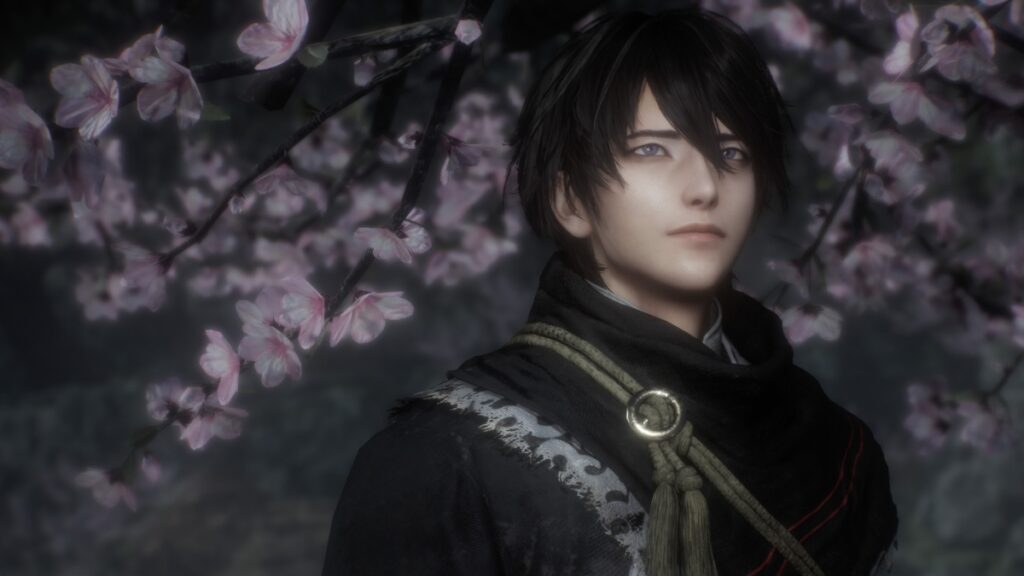
If it wasn’t obvious by now, Dynasty Warriors: Origins takes place during the Three Kingdoms era, more specifically, from the start of the Yellow Turban Rebellion and goes all the way to the famous Battle of Chibi. I could turn this into a history lesson and talk about every battle in the game. Heck, I’d love to do it. Thanks to Romance of the Three Kingdoms, this era became one of my favorites in a gaming setting. Yet, I’ll focus on the new story Origins is going for.
Dynasty Warriors: Origins combines elements from the Romance of the Three Kingdoms and historical facts with a new mystical tale surrounding the Guardians of Peace, which is the faction our amnesiac protagonist belongs to. At first, this might seem like a strange approach to the series’ storytelling. Instead of controlling the historical figures that have built the franchise for years, you take the role of a “clean slate” protagonist. There might be a bit of skepticism about this, but I dare say Origins has some of the most endearing storytelling out there.
You start with a quick tutorial following the founding of the Yellow Turbans. Soon after, you realize how this faction has caused nothing but turmoil to the kingdom, and the prominent figures we love join the fray. I’m talking about Cao Cao, Liu Bei, and Sun Jian, alongside all their allies, like Guo Jia, Zhou Yu, Guan Yu, and many, many more. No, really. If I listed every character you come across in the game, this would become a never-ending review. While not all of them are playable, you can interact with them, and that’s where the game truly shines.
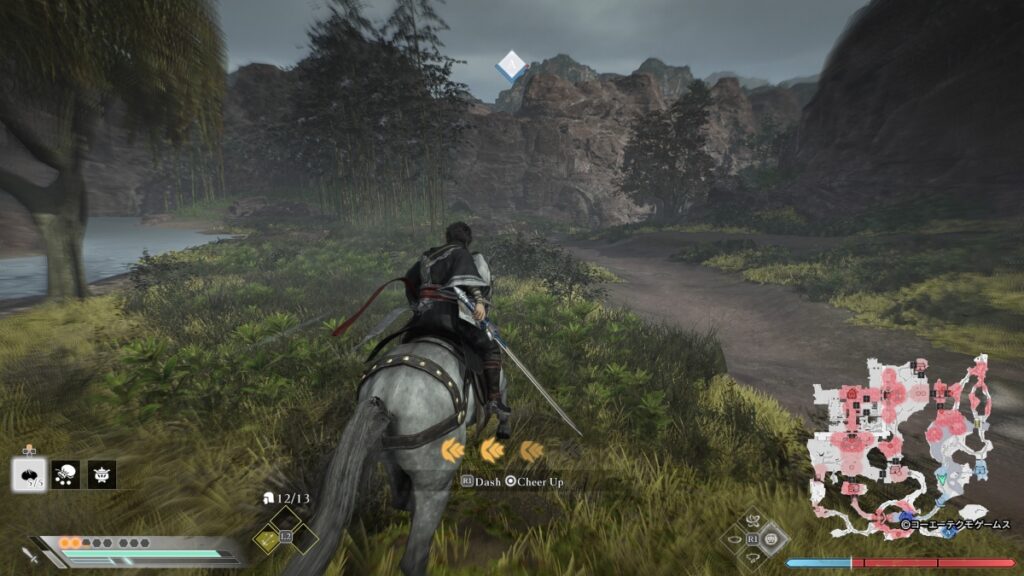
Outside of the superb storytelling, which mixes some historical facts and changes a few others in ways that do not modify history or source material that much, the cast takes the crown in every sequence. In a way, Dynasty Warriors: Origins takes a Fire Emblem: Three Houses approach. You meet characters, talk to them, raise your bonds with them, and discover their stories during these turbulent times. Often, I laughed, felt sad, and connected with every member of Origins. Instead of seeing them as pieces on a chessboard of warfare, I saw them as people with emotions, strong personalities, and perfectly-developed stories.
The one minor complaint I have is the illusion of choice. See, games nowadays let you pick from different dialogues when talking. Origins isn’t the exception. However, there isn’t really a lot to pick outside some flair options. From what I saw in my 30-hour playthrough, being nice or rude to characters didn’t affect their story or my bond with the characters. And yes, there is a moment in the middle of the game where you have to make a huge choice that affects your playthrough and will even lead to playing the game more than once to see everything. But outside of that, it didn’t affect much. Still, that never diminished the impact the story or characters had on me. It was a terrific narrative that felt even better and more approachable due to the new additions and characters.
Guardian of Peace, Bringer of Mayhem
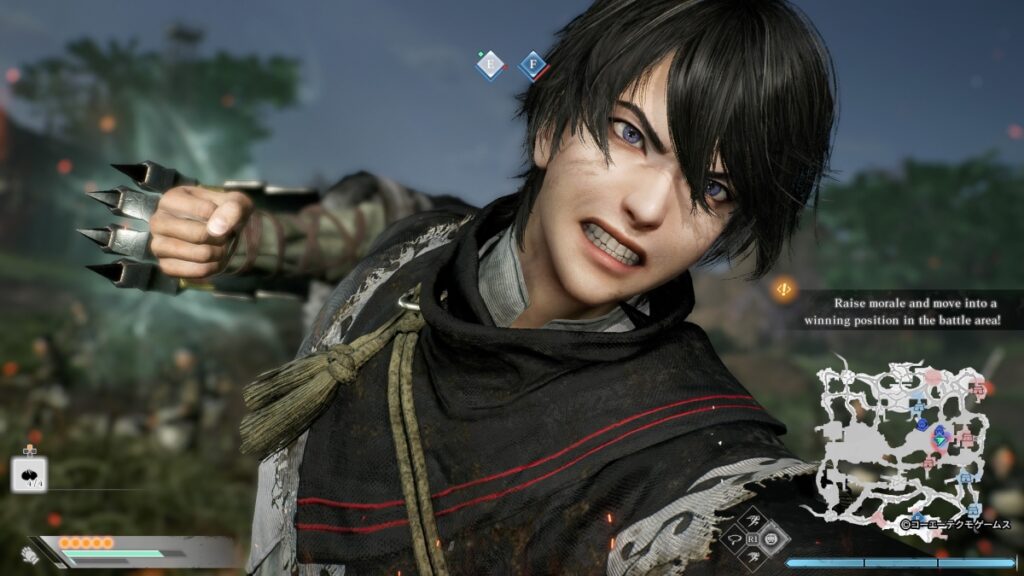
The 1v1000 battles of Dynasty Warriors are some of the most iconic in the industry, and Origins delivers on that perfectly. The gameplay loop might seem a bit simple, but the one thing that surprised me was how every battle, at least the main story ones, differed greatly from one another, which is a huge achievement for Omega Force.
When you pick a battle, you get a quick cutscene with story beats and head to the planning phase. You get a glimpse of the battlefield, and most fights tell you what you and your companion must do. In some, you’ll have to protect the battle’s commander. In others, you’ll have to capture bases quickly. A few others will have you build siege weapons to infiltrate a castle. One of my favorites actually took place inside a building where I had to discover hidden passages to escape. People often say variety is the spice of life. Well, here it is the spice of battle because every setpiece is just a chaotic playground you can tackle as creatively as you want.
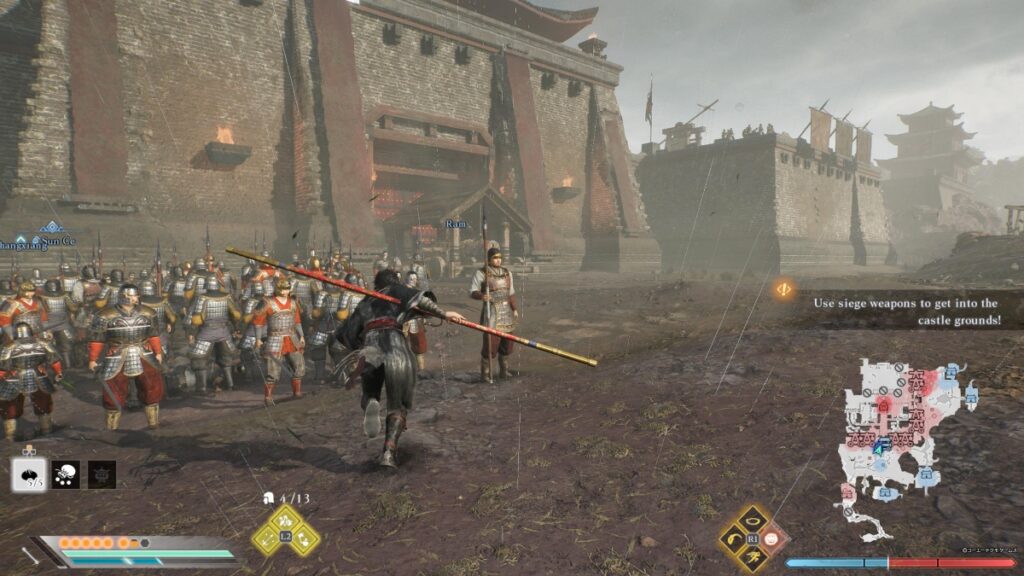
To defeat all the enemies that often feel like toy soldiers flying around the battlefield, you have quite the arsenal. At first, you’ll start with one weapon: your trusty sword. Whenever you level up your proficiency with a weapon, you’ll level up in the game’s ranks, which unlock different skill trees. I liked this system because it encouraged me to try all the armaments in the game. Speaking of which, all are extremely satisfying to use.
For example, your sword has quick attacks with familiar combos, combining light and strong moves. However, weapons like the lance focus on getting hit multiple times until you perform a devastating counterattack. Another example is the gauntlets, which have different stances that you can activate depending on the combo you pull off. With so many weapons, it is quite refreshing to see that every single one felt differently to use. Furthermore, each blade, spear, and flying chakram has different battle arts you can activate by generating Bravery, the heroes’ resource. And yes, there are also Musou attacks that can obliterate hundreds of enemies in one second.
Powerful Foes, Even More Powerful Allies
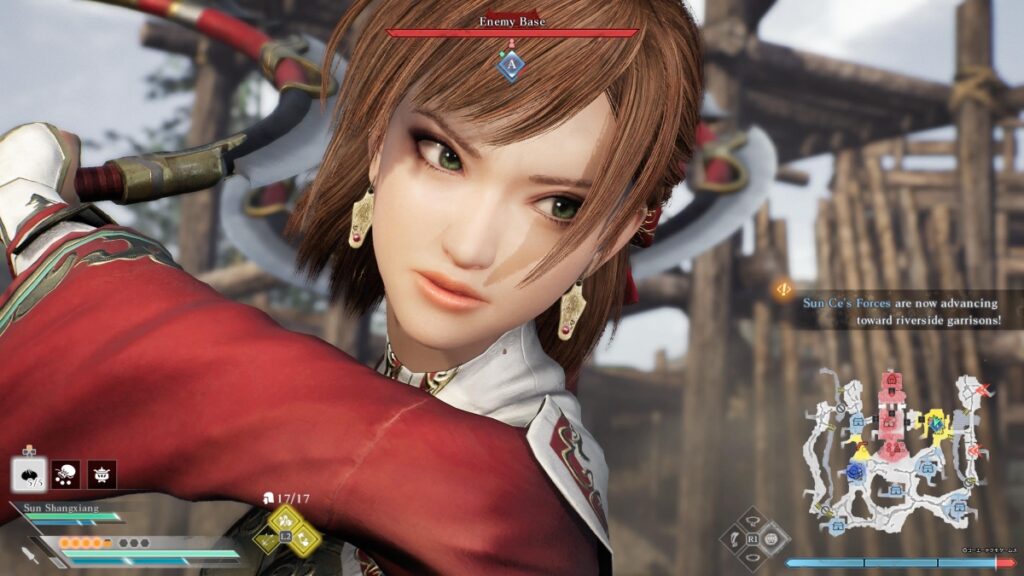
The soldiers flying like dry leaves with one hit aren’t the only ones you’ll face in Dynasty Warriors: Origins. During my preview, I mentioned how one of the best things about Origins was the boss fights. In a way, they reminded me of a soulslike boss to a minor extent. Bosses come in all forms and sizes. Some wield devastating hammers, twin pikes, swords, and even fans that can blast you away. Each one has Fortitude bars, which are like a shield. Once you break those, you can perform a deadly attack on them or even finish them off. At first, some fights felt a bit repetitive. But once you reach a point where you’re fighting three officers at once, you’ll see how much the combat truly shines.
Beyond that, a few boss fights also stood out, and frankly, I wish we had more. Duels, which are one-on-one battles, were scarce but fun to experience. There’s a morale bar for both opponents that increases or decreases depending on the damage you do or receive. Once you deplete the opponent’s bar or the time ends, you’ll end the duel, thus defeating the officer. It was nice to see this happening in the middle of the battle, and it added something engaging to the already chaotic battlefield.
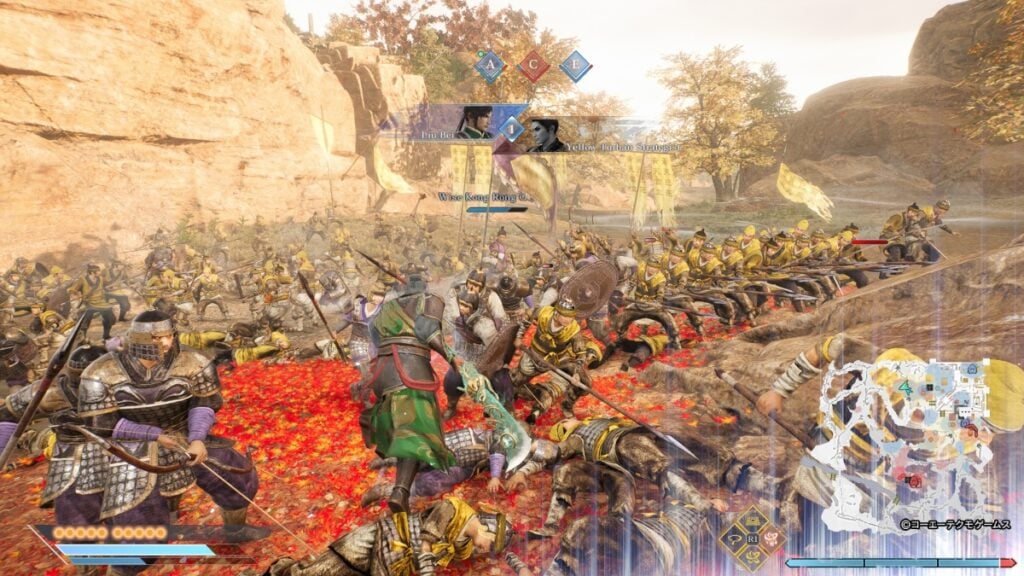
Regarding allies, there are many you can use, but maybe not in the way veteran fans are used to. You can’t control heroes during a full fight now. Instead, you pick a companion and wait for their bar to fill up. Once it’s full, you can take control of them and use their Battle Arts and Musou attacks. When you’re not in control of them, they’ll help by performing Battle Chains, where they perform a Battle Art after you. It would’ve been great to control them all, but due to story reasons, it makes sense why the developers took this approach.
Lastly, you get a small army that follows you around and can perform tactics. You start with a dozen of soldiers. They can shoot arrows, charge at enemies, and even defend a position. All of these skills are tied to a cooldown or to the soldiers themselves. If someone defeats them, they’ll leave you, so you must be careful about it. While not too deep, it was nice that the protagonist got a small army that grows as you finish optional quests; more on those later.
An Approachable Way to Building Your Guardian
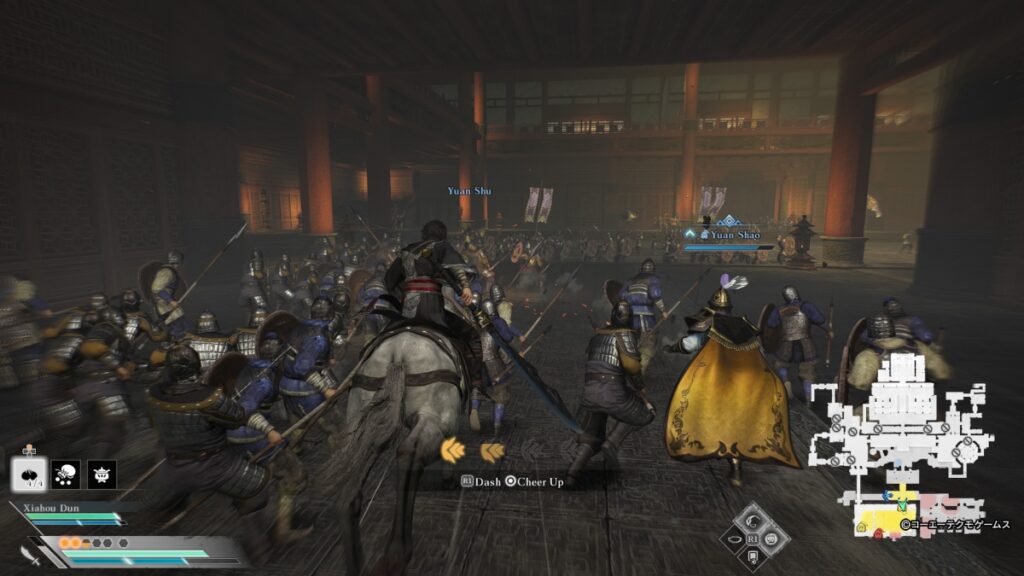
Itemization is another thing I liked due to its off-battle simplicity but hands-on depth. Outside of battle, you can equip many of the weapons you loot from a fight. Most of them have random stats, which reminded me of how items in Nioh 2 worked. Some have a chance to spawn healing items. Others increase your light attack strength. A few can help you block arrows when attacking, and so on. Some might not be big fans of the random aspect of itemization, but I liked it because, once again, you have so many weapons to try that you’ll be swapping them frequently.
Beyond that, you can equip a few accessories that provide some boost. You’ll get these items from quests or optional battles, and they are quite useful. I found fewer accessories than weapons, and I was glad I did. Every item felt relevant, and instead of having loot piñatas and getting 20 of them each battle, it was nice to see one sporadically that would modify my build considerably. There is also a gem-crafting system, which, while not bad due to the passive bonuses, didn’t really grab me. It has you funneling a currency and creating random gems that upgrade one of the five you can equip. It’s not a bad system, but it was not my favorite, and often one I forgot about. And, even while forgetting about it, I never felt my character becoming weaker, so it didn’t feel too relevant at times.
Other than that, the character customization was fantastic and often led me to try different builds. For my spear build, I tried to focus on weapons that would increase my charged attack damage. Whenever I wielded a Podao, I focused on items that restored my health once I defeated a set number of foes. Dynasty Warriors: Origins does an amazing job at giving you in-depth building mechanics but doesn’t punish those who just want to equip the weapon that has the higher damage potential. It is one of the most approachable systems and one many will enjoy.
A Gorgeous Kingdom to Explore and Wreak Havoc In
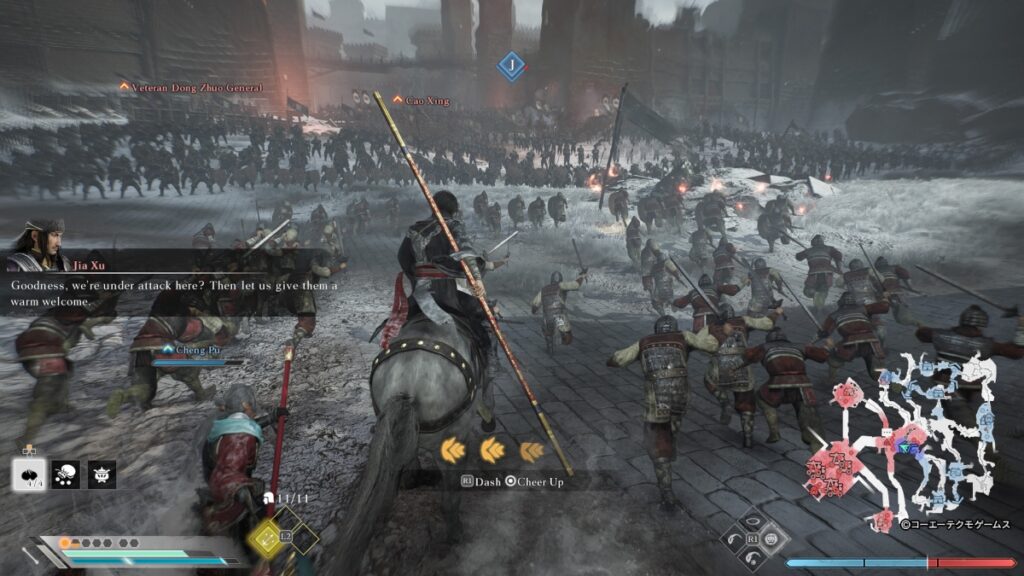
Dynasty Warriors: Origins takes a semi-open-world approach. You traverse the map as a giant version of yourself on foot or on any of your horses. While traversing, you can find optional battles, which are quick and are usually there to help you farm weapon proficiency and skill points. Cities and towns only serve as a place where there are shops and an inn to read letters or change your equipment. You only enter inns, and towns don’t really have an explorable part, but I didn’t mind that. The diorama-like map was beautiful and full of details despite how small it felt at first. Yet, a few new regions open up once the story progresses, and you can find more characters to interact with and more battles to tackle.
Initially, I wasn’t a big fan of the map. However, I quickly realized that this was a genius approach to exploration. In truth, Dynasty Warriors as a franchise is more about the epic battles. Including a big open world would make things tedious. So, the way the game handles exploration is perfect.
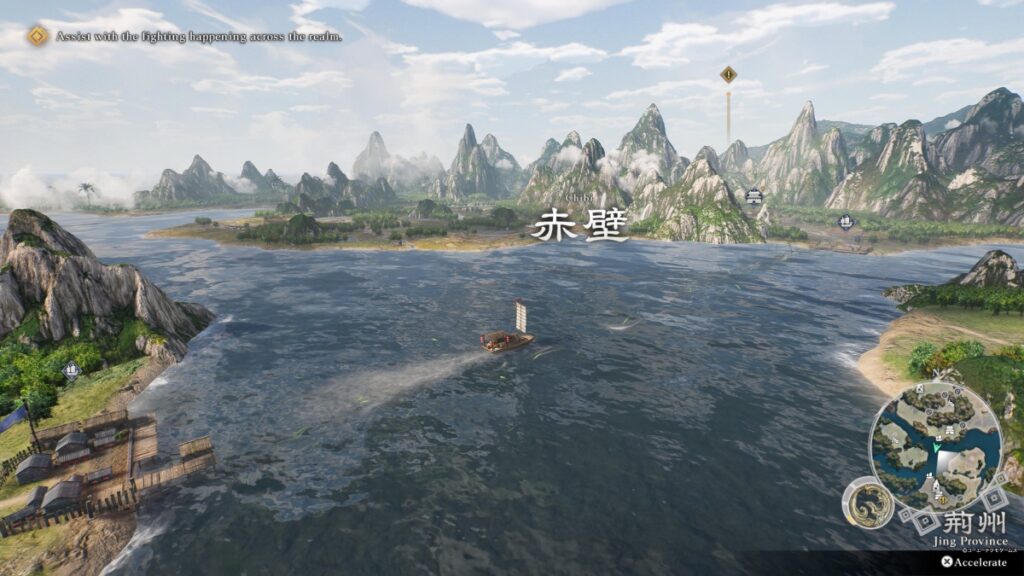
Also, in terms of combat, I already talked about the system, but let’s focus on another important part: performance. One would think that hundreds of enemies flying in real time would cause performance issues. Well, that never happened. I played on a launch-day PS5, and my framerate only dropped if there were many particle effects like dust or mist, and those frame drops were minor. Every battle, even those with large forces and 10 officers fighting at the same time against your army, never made my console struggle. Overall, it is a huge win for the tech wizards behind Origins.
Lastly, the visuals. Beyond the gorgeous landscapes and battlefields, I have to mention the character models. Koei Tecmo is known for its beautiful characters in any of the games it has. From Nioh to Dynasty Warriors and even Romance of the Three Kingdoms, every single cast member is gorgeous, and Origins follows that rule. I really thought Diaochan or Lady Sun would steal my heart, but Omega Force and Koei Tecmo created some of the most handsome husbandos in gaming history, so props to the people behind character designs.
A Flawless Conquest
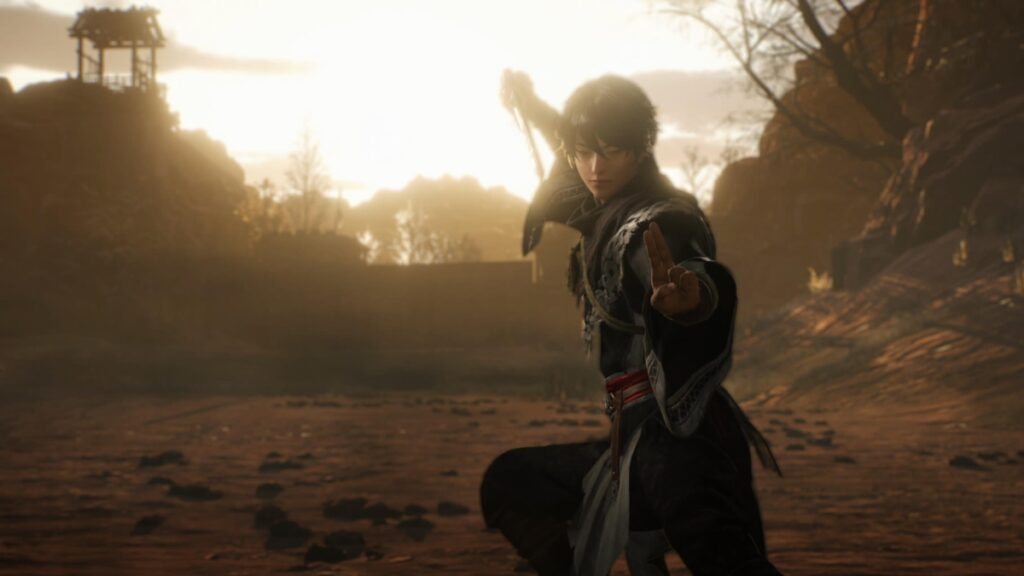
Dynasty Warriors: Origins is a superb soft reboot of the franchise. It takes many of the things fans love from the series but makes them so approachable to those joining the fight for the first time. Yes, there are a few minor issues. Riding a horse feels like driving a GTA 4 car, the gem system isn’t that great, and a few dialogue choices don’t carry a lot of impact. But those are my only complaints, which, to be fair, do not affect the gameplay experience at all.
This 30-hour journey, which didn’t show me everything the game had to offer, was one of the most enjoyable gaming experiences I’ve had. The story was endearing and memorable, with character development at its prime in every sequence. Combat is highly approachable for newcomers but deep enough to satisfy veteran fighters. In short, Origins manages to raise the bar on an already well-established and beloved franchise. As one of the new titles of 2025, it sets the bar very high. Omega Force and Koei Tecmo have created something epic and full of enjoyable action and one of the most remarkable and endearing games of the year due to a perfect mix of addictive and dazzling gameplay with superb storytelling.
Review copy provided by Publisher.
Dynasty Warriors: Origins (PS5 Reviewed)
Dynasty Warriors: Origins is a perfect new approach to a beloved franchise. With highly customizable combat options, epic battles with a lot of variety, and superb storytelling accompanied by excellent character development moments, it is a remarkable game from start to finish.
Pros
- Superb storytelling
- Approachable combat system
- Fantastic performance on console
Cons
- Horse riding can be frustrating
- Certain dialogue choices don't lead to anything

